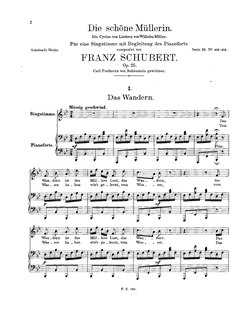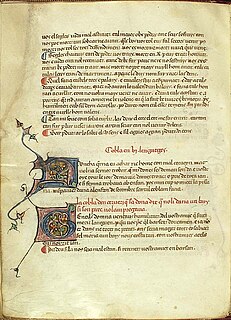An ode is a type of lyrical stanza. It is an elaborately structured poem praising or glorifying an event or individual, describing nature intellectually as well as emotionally. A classic ode is structured in three major parts: the strophe, the antistrophe, and the epode. Different forms such as the homostrophic ode and the irregular ode also enter.

Poetry, also called verse, is a form of literature that uses aesthetic and often rhythmic qualities of language − such as phonaesthetics, sound symbolism, and metre − to evoke meanings in addition to, or in place of, a prosaic ostensible meaning. A poem is a literary composition, written by a poet, using this principle.
A quatrain is a type of stanza, or a complete poem, consisting of four lines.

A sonnet is a poetic form that originated in the poetry composed at the Court of the Holy Roman Emperor Frederick II in the Sicilian city of Palermo. The 13th-century poet and notary Giacomo da Lentini is credited with the sonnet's invention, and the Sicilian School of poets who surrounded him then spread the form to the mainland. The earliest sonnets, however, no longer survive in the original Sicilian language, but only after being translated into Tuscan dialect.
Assonance is a resemblance in the sounds of words/syllables either between their vowels or between their consonants. However, assonance between consonants is generally called consonance in American usage. The two types are often combined, as between the words six and switch, in which the vowels are identical, and the consonants are similar but not completely identical. If there is repetition of the same vowel or some similar vowels in literary work, especially in stressed syllables, this may be termed "vowel harmony" in poetry.

William Shakespeare (1564–1616) wrote sonnets on a variety of themes. When discussing or referring to Shakespeare's sonnets, it is almost always a reference to the 154 sonnets that were first published all together in a quarto in 1609. However, there are six additional sonnets that Shakespeare wrote and included in the plays Romeo and Juliet, Henry V and Love's Labour's Lost. There is also a partial sonnet found in the play Edward III.
"Dulce et Decorum est" is a poem written by Wilfred Owen during World War I, and published posthumously in 1920. The Latin title is taken from Ode 3.2 (Valor) of the Roman poet Horace and means "it is sweet and fitting". It is followed by pro patria mori, which means "to die for one's country". One of Owen's most renowned works, the poem is known for its horrific imagery and condemnation of war. It was drafted at Craiglockhart in the first half of October 1917 and later revised, probably at Scarborough but possibly Ripon, between January and March 1918. The earliest surviving manuscript is dated 8 October 1917 and addressed to his mother, Susan Owen, with the message: "Here is a gas poem done yesterday ."

Strophic form – also called verse-repeating form, chorus form, AAA song form, or one-part song form – is a song structure in which all verses or stanzas of the text are sung to the same music. Contrasting song forms include through-composed, with new music written for every stanza, and ternary form, with a contrasting central section.

Muwashshah is the name for both an Arabic poetic form and a secular musical genre. The poetic form consists of a multi-lined strophic verse poem written in classical Arabic, usually consisting of five stanzas, alternating with a refrain with a running rhyme. It was customary to open with one or two lines which matched the second part of the poem in rhyme and meter; in North Africa poets ignore the strict rules of Arabic meter while the poets in the East follow them. The musical genre of the same name uses muwaššaḥ texts as lyrics, still in classical Arabic. This tradition can take two forms: the waṣla of Aleppo and the Andalusi nubah of the western part of the Arab world.
Onegin stanza, sometimes "Pushkin sonnet", refers to the verse form popularized by the Russian poet Alexander Pushkin through his 1825-1832 novel in verse Eugene Onegin. The work was mostly written in verses of iambic tetrameter with the rhyme scheme aBaBccDDeFFeGG, where the lowercase letters represent feminine rhymes and the uppercase representing masculine rhymes. For example, here is the first stanza of Onegin as rendered into English by Charles Johnston:

Der von Kürenberg or Der Kürenberger was a Middle High German poet and one of the earliest Minnesänger. Fifteen strophes of his songs are preserved in the Codex Manesse and the Budapest Fragment.
Pindarics was a term for a class of loose and irregular odes greatly in fashion in England during the close of the 17th and the beginning of the 18th century. Abraham Cowley, who published fifteen Pindarique Odes in 1656, was the poet most identified with the form though many others had composed irregular verses before him. The term is derived from the name of a Greek archaic poet, Pindar, but is based on a misconception since Pindar's odes were in fact very formal, obeying a triadic structure, in which the form of the first stanza (strophe) was repeated in the second stanza (antistrophe), followed by a third stanza (epode) that introduced variations but whose form was repeated by other epodes in subsequent triads. Cowley's Resurrection, which was considered in the 17th century to be a model of the 'pindaric' style, is a formless poem of sixty-four lines, arbitrarily divided, not into triads, but into four stanzas of unequal volume and structure; the lines which form these stanzas are of lengths varying from three feet to seven feet, with rhymes repeated in no order. It was the looseness of these 'pindarics' that appealed to many poets at the close of the 17th century, including John Dryden, Aphra Behn, and Alexander Pope, and many lesser poets, such as John Oldham, Thomas Otway, Thomas Sprat, John Hughes and Thomas Flatman.
This glossary of literary terms is a list of definitions of terms and concepts used in the discussion, classification, analysis, and criticism of all types of literature, such as poetry, novels, and picture books, as well as of grammar, syntax, and language techniques. For a more complete glossary of terms relating to poetry in particular, see Glossary of poetry terms.
This is a glossary of poetry.

Sonnet 78 is one of 154 sonnets published by the English playwright and poet William Shakespeare in 1609. It is one of the Fair Youth sequence, and the first of the mini-sequence known as the Rival Poet sonnets, thought to be composed some time from 1598 to 1600.

In Old Occitan literature, a tornada refers to a final, shorter stanza that appears in lyric poetry and serves a variety of purposes within several poetic forms. The word tornada derives from the Old Occitan in which it is the feminine form of tornat, a past participle of the verb tornar. It is derived from the Latin verb tornare.
Fixed verse forms are a kind of template or formula that poetry can be composed in. The opposite of fixed verse is free verse poetry, which by design has little or no pre-established guidelines.
A sestain is a six line poem or repetitive unit of a poem of this format (musaddas), comparable to quatrain which is a four line poem or a unit of a poem. There are many types of sestain with different rhyme schemes, for example AABBCC, ABABCC, AABCCB or AAABAB. The sestain is probably next in popularity to the quatrain in European literature. Usually there are three rhymes in the six-line strophe, but sometimes there are only two.
Poetic devices are a form of literary device used in poetry. Poems are created out of poetic devices composite of: structural, grammatical, rhythmic, metrical, verbal, and visual elements. They are essential tools that a poet uses to create rhythm, enhance a poem's meaning, or intensify a mood or feeling.

The Incognito Lounge and Other Poems is a collection of lyric poetry by Denis Johnson. Published in 1982 by Random House, the volume was Johnson's fourth book of poems.